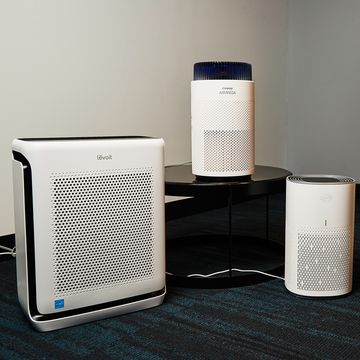The way most of us surf the web now, traffic takes a pretty direct route. The request you make for a website goes directly from your computer to a server and comes back again, delivered in the form of whatever website you're visiting. And everything is out in the open, which means anyone who wants to catch a glimpse of your location can do so. But when the request is more like an onion, wrapped in layers of encryption and moved around a roundabout route from your computer to the end server, it becomes almost completely anonymous.
That's the thinking behind online-anonymity-enabling Tor Project (short for The Onion Routing Project), which is now packaged in hardware form in the Safeplug, a device made by Pogoplug. The $49 box plugs directly into an Internet router and reroutes traffic on that network through Tor, which began with funding from the U.S. Naval Research laboratory (and has popped up in the general consciousness this year as the way to get onto the now defunct Bitcoin marketplace Silk Road). Internet traffic that moves through the Tor network passes, encrypted, through a series of relays before it reaches the intended server and is sent back. So instead of taking a straight path, data move in twists and turns, throwing off would-be stalkers.
Until now, the only way to use Tor has been through the Tor browser. It can be unfamiliar and intimidating to the non-tech-savvy (and some won't find it terribly aesthetically pleasing). Safeplug takes away that barrier to entry and annoyance. Once the Linux-based box is plugged in, it takes about two minutes to configure it through your browser of choice, whether Chrome, Firefox, Safari, or Internet Explorer. And that's that.
As Safeplug promises, the setup is a breeze. The trouble is in the actual browsing. It's not the fault of the device, but rather the system it uses. Because it beams your Internet traffic around a twisting path of randomly picked servers on the way to its destination, it's slow-going. With Safebox plugged in, it took more than a minute to load google.com via an internet connection that runs at about 40 Mbps. There's some relief in that you can set Safebox to run only on a certain browser and, within that browser, choose websites that bypass Tor. But if you are truly concerned about privacy, you'd want all of your traffic to be encrypted and rerouted, so not running Tor would defeat the purpose.
Another problem comes from connecting the Safeplug to more than one router. I ran into trouble after I'd activated with one router, disconnected it, and plugged it into a second router. The Safeplug stays attached to whatever router it was connected to during initial setup. So when I went through the setup again, with a different router, everything looked successful until I was supposed to hit the settings screen, the final webpage of configuration. It was blank. To make it work, I had to go to my router's webpage and find the Safeplug's IP address in the list of connected DHCP clients. Using that address, I could again access the Safeplug settings.
The best use of this tech might be sparing use: Keep the Safeplug attached to a single router, and keep it running not in your favorite browser but in your second favorite one. That way, when you really want to cover your tracks, you can switch over to the oniony browers, and the rest of the time you can browse happily and speedily in your normal browser.

Rachel Z. Arndt is the author of the essay collection Beyond Measure. Her writing has appeared in Quartz, The Believer, Fast Company, and elsewhere. She lives in Chicago.













